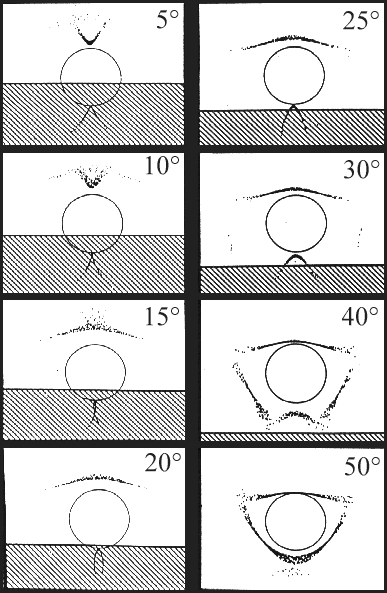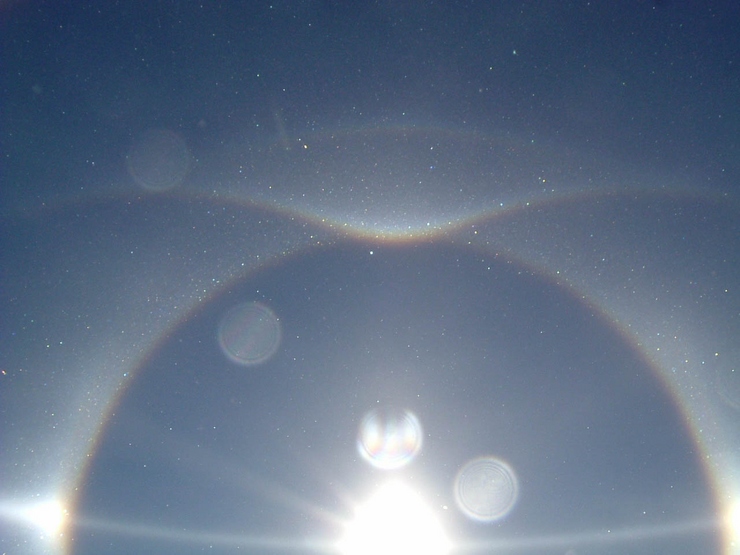- Crystal orientation:
- double orientation
- Path of light:
- 3-7
- Occurrence:
- rarely
ca. 2-6 days a year
EE 27

Description:
A Parry arc changes its shape subject to the elevation of the sun. It is mainly observed at sun elevations between 15° and 40°. Then it can be seen as a concave arc between the two “branches” of the upper tangent arc or above the circumscribed halo. At very low sun elevations the arc is formed convex towards the sun. The Parry arc is a rather faint, but colourful arc. Towards the sun it is of an orange-red colour while its outer part is faintly bluish. At very low or very high sun elevations a Parry arc becomes so faint that it can hardly be seen. In rare cases, at very high sun elevations, also a lower Parry arc can occur. At a sun elevation of about 50° it is below the 22 -halo and touches the 22°-halo at a sun elevation of 71°. Always when there is a unusually bright tangent arc or circumscribed halo, there is also a good chance for the appearing of Parry arc.

The parry arc at different sun elevations. Source: R. Greenler; Rainbows, Halos and
Glories; Cambridge University Press, 1980
Formation:
To generate a Parry arc, the ice crystals have to be double-orientated. Double-orientated means that not on1y the main axis of the column-shaped ice crystals is orientated horizontally but also that the upper and lower prism faces are orientated parallel to the horizon. It happens very seldom that there is a large number of crystals which are orientated that way. The path of light is the same as it is when an upper tangent arc occurs. The light enters the upper horizontally orientated prism face and leaves the next but one.


